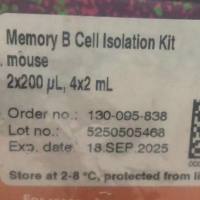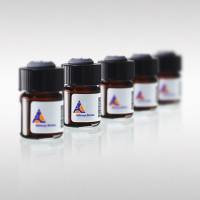L.T. Thompson, Ph.D. Aging Memory Research Labs
互联网
Protocol for Caloric Restriction of Rats, v. 1.0
very roughly outlined by Tim Goble in another protocol
modified and completed by Tres Thompson, Aug. 2005
Rationale: Restricting caloric intake of adult rats serves several useful experimental
purposes: 1. it extends their lifespan (see Pubmed for literature related to this effect);
2. combined with timed daily feeding immediately post behavioral testing, it yields rats that are highly motivated to seek out food rewards in a variety of behavioral settings;
3. combined with appropriately small reward quantities, or with non-nutritive rewards
such as saccharine/water solutions, it allows repetition of multiple behavioral tests in a relatively short period of time without satiety becoming a significant behavioral variable.
We have found that depriving rats of food sufficient to reduce their body weight to 85%
of their ad libitum weight, finding the quantity of daily food sufficient to maintain this weight for 3�4 days, and then maintaining them on this daily diet plus food rewards during behavioral training and testing consistently yields good behavioral motivation.
SPECIAL NOTE: this procedure ABSOLUTELY REQUIRES daily attention to the subjects (daily in this context includes weekends, holidays etc.!) DO NOT NEGLECT this daily care!
Subjects:
adult rats (> 150 g. male Long-Evans rats are typically used)
Equipment required:
rat home cage in cage rack w. automatic watering system
digital balance
calculator (or competent math computational skills)
Materials required:
standard rat chow pellets
log sheet in lab notebook
Procedure:
• On the first day, weigh rat with balance and place singly in home cage
Note: when double- or triple-housed, one rat tends to establish social dominance,and eats more than his share of food, increasing variability and introducing additional variables counterproductive to consistent behavioral outcomes
• Record the ad libitum weight in the daily log
• Calculate 85% of this weight; this yields the target 'deprived' weight
• Record the 'deprived' weight for future reference
• Feed the rat 2�3 standard food pellets; this should be less than it would eat ad libitum.
Record the amount of food given in the log. Pellets vary; try to select for uniformity, or adjust quantities as needed. Pellets can also be weighed―if in doubt, weigh and record them daily as well.
L.T. Thompson, Ph.D. Aging & Memory Research Labs, UT Dallas
Rodent Behavior Protocols
2
• Clearly mark the cage "caloric restricted" or "food deprived" or "DO NOT FEED", so
that the animal caretaker does not interfere with the protocol.
• Each day following, weigh and manually feed the rat, typically giving him 2―3 food
pellets, but adjusting as needed to prevent too rapid a weight loss. Record daily rat
weight and quantity of food given
• Within 4-6 days, the rat should reach the target 'deprived' weight
• For the next 3―4 days, adjust the amount of food pellets given to maintain the
'deprived' weight. Continue logging weight and food quantities daily until the rat stabilizes at the 'deprived' weight ± 5 g.
• After this, continue weighing and feeding the rat the same quantity of food daily, and logging both weight and amt. of food given.
Weight gain may occur, since behavioral food rewards will contribute to the daily
diet. Further weight LOSS SHOULD NOT OCCUR―increase food slightly as needed to prevent it.
• At this point, the rat can be maintained indefinitely on this protocol, so long as daily care is given. Avoid allowing rats access to food before behavioral testing, and
time daily feedings to follow such testing.
• When caloric restriction is no longer required, remove all caloric restriction labels from the cage, and notify the caretaker that the animal is now on "free feed".
Fill the food hopper manually the first day to ensure the rat is fed, and check periodically that it remains filled.
NOTE: automatic watering systems are NOT guaranteed to function. Far too often,
experimenters neglect to check that rats are receiving both food AND WATER.
Your fingertip pressed against the water spout (located in the hole at the back of
the homecage; pull the cage out to test it) should release a few drops of water per
press. Rats tongue this spout to release water. Rats will lose weight rapidly, and
die within 2―3 days, if water is not readily available. If in doubt, move the rat to
a different homecage and report the problem IMMEDIATELY to the animal caretaker.
ANY TIME a rat mysteriously loses weight, after being relatively stable, suspect that water deprivation may be the problem and test the water system!
Rats on this protocol should live longer than normal laboratory rats, NOT have a shorter lifespan!









